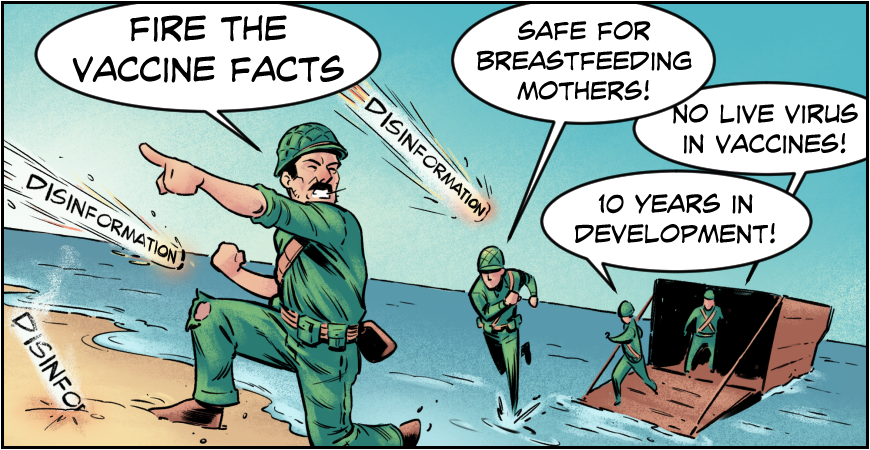Although the loss of any lives to COVID-19 is tragic, Australia as a whole has fared much better than many countries around the world in managing this virus without an effective means of treatment or medical prevention to date.
Now, as the world approaches a year since COVID-19 was declared a pandemic, a saviour seems to have appeared in the form of a collection of vaccines that are proving effective in the reduction of infection, hospitalisations, severe illness and death.
Results from studies covering the Pfizer/BioNTech and AstraZeneca/Oxford vaccines by Public Health England and Public Health Scotland, in particular, were sufficiently encouraging for British Prime Minister Boris Johnson to feel confident enough to declare that the rollout of vaccines had “dramatically changed the odds in our favour”.
These two vaccines have been approved for use in Australia by the Therapeutic Goods Administration, but even the most effective vaccine is useless if people aren’t willing to receive them.
Anti-vaccination protests in capital cities across the country late last month suggest that the next battle in the war against COVID-19 will be on the communications front.
While the vocal minority that attended the rallies will prove the most difficult to convince, getting the larger number of people who are supportive of vaccines generally, but are still lacking enough knowledge about these specific ones, on board will be the most important task.
To do so, the Federal Government – which is responsible for the rollout – will need to achieve two things with its communications: to make sure information is clear and accessible, and to be proactive in fighting misinformation.
The rollout only began last week, but I’ve personally seen early signs that there is work to be done to execute both of these.
With respect to the former, take the example of my sister, who recently gave birth to her first child. We were at lunch and I overheard her discussing the vaccine with our mother. While both are generally pro-vaccine, neither had heard anything conclusive about whether the COVID-19 options were safe for breastfeeding mothers to have, and as a result were leaning towards avoiding it.
The next day I heard Federal Health Minister Greg Hunt declare that the vaccine was safe for breastfeeding mothers on the radio. As this was new information, I wanted to check the facts for myself before passing it along to my sister, so I visited the Federal Government’s COVID-19 vaccine website in search of more information.
I had six options: information for COVID-19 vaccine providers, COVID-19 vaccine priority groups, COVID-19 vaccine distribution, aged care providers, people with disability; and Aboriginal and Torres Strait Islander people.
As a member of the general public with questions, none of these labels applied to me, so I picked one at random and started digging around. It took me more than 10 minutes and two websites to find the factsheet I was looking for that explained the science behind that declaration.
If it was my sister, or anyone short on time or determination, they would have likely given up much sooner and left without having their valid question answered.
This is an area that can easily by improved by looking to another government-funded organisation as a guide: the ABC’s frequently updated, easily navigated guide to the vaccine rollout.
This resource works for several reasons: it’s targeted at the general population in addition to specific demographics; it communicates in layman’s terms, while still providing links to more detailed information within the text; and it links to government factsheets and other reliable sources of information.
Of course, accessible information is important, but the Federal Government must also be proactive in identifying and combating misinformation by communicating the science in a clear, easy to understand way.
One of the most common complaints about the COVID-19 vaccines is that people feel they have been “rushed” or “not tested enough” and this is compounded by a lack of urgency among Australians. Outside of Victoria, we haven’t had mass deaths on any significant scale and many people feel safe enough behind closed borders to wait until the vaccine is more established.
Of course, the idea that the vaccine was “rushed” or “untested” is false. A recent episode of the Economist Radio podcast detailed how Professor Sarah Gilbert, the co-creator of the AstraZeneca/Oxford vaccine, spent 10 years developing vaccine platforms which allow new vaccines to re-use components of previous vaccines. Professor Gilbert’s years of work have allowed the quick development of a vaccine for COVID-19 once the genetic sequence of the coronavirus was published, it only took a few weeks to use it to create the vaccine.
As far as why the approvals were achieved so quickly, there’s a fairly simple explanation. Instead of waiting until all stages of clinical trials were completed to provide data to regulatory bodies, the developers of vaccines were sharing data with regulators as it came in. This meant that when the final trials were completed, much of the approvals process had already been carried out.
If more people knew and understood this information, the feeling that the vaccines were rushed would be reduced.
This is just one example of misinformation, and one solution, but there are other falsehoods in circulation and the Federal Government must be proactive in combating it.
Ultimately, Australia might be a victim of its own success in containing the virus. More than 200 million vaccines have been deployed across the world, but few countries have been as effective as Australia in using border control to contain the virus. The lack of community spread of COVID-19 means that some people view the vaccine as a luxury, not a necessity.
For Australia to open up to the world again, widespread vaccinations are critical, and effective communications will be a cornerstone of this effort.
 ReGen Strategic
ReGen Strategic